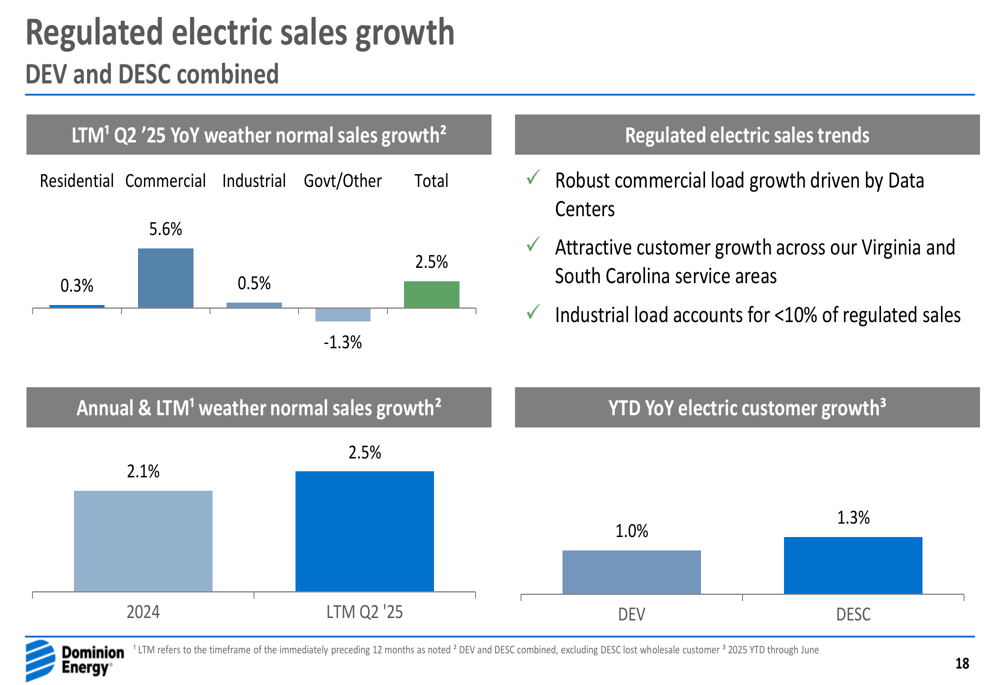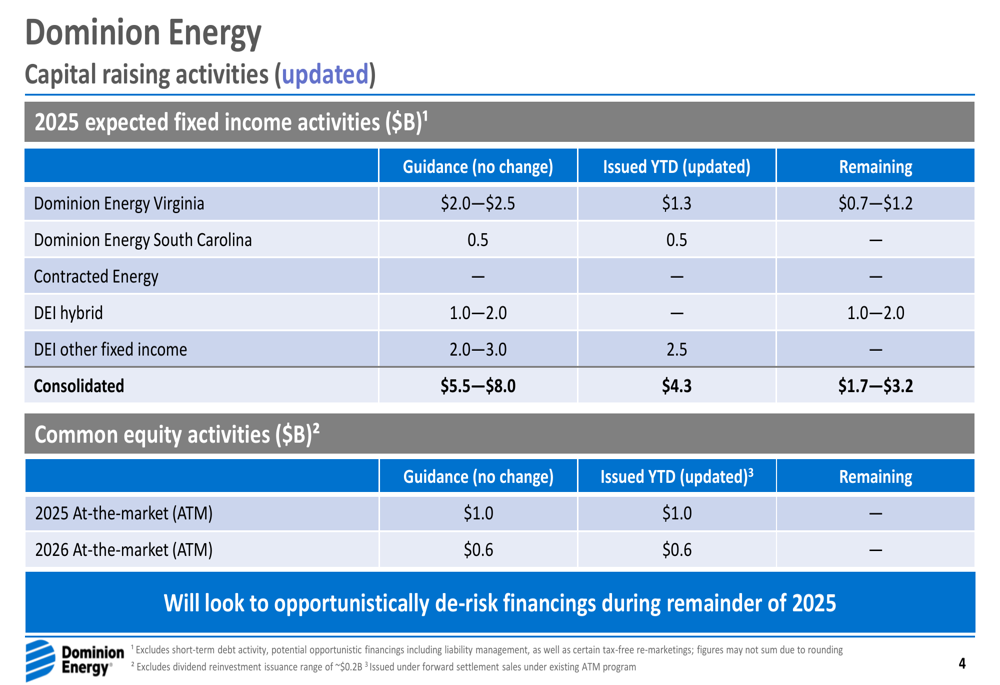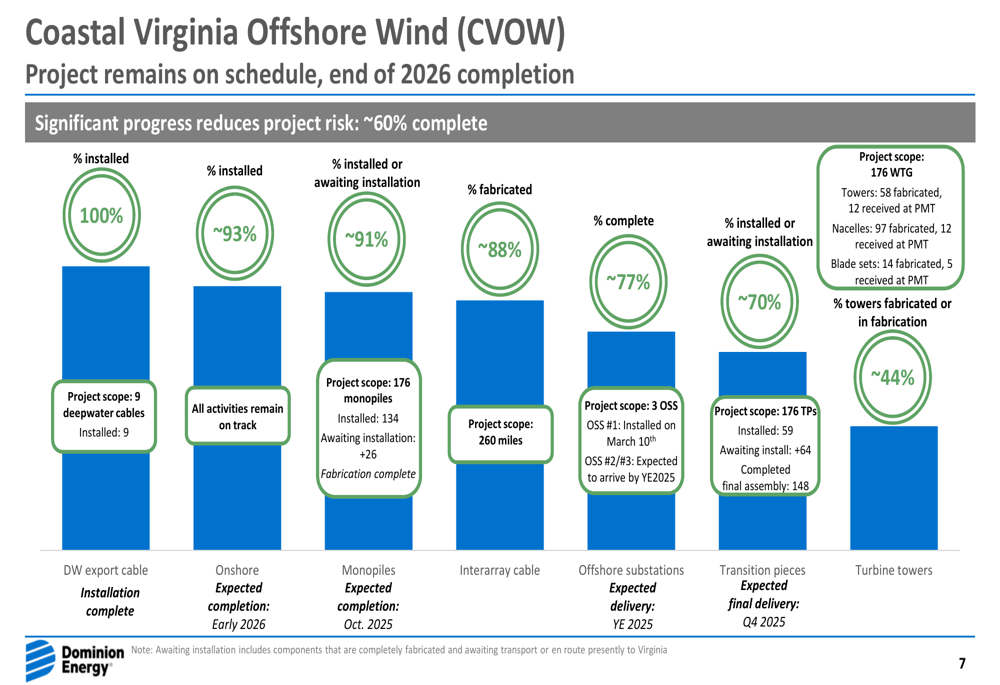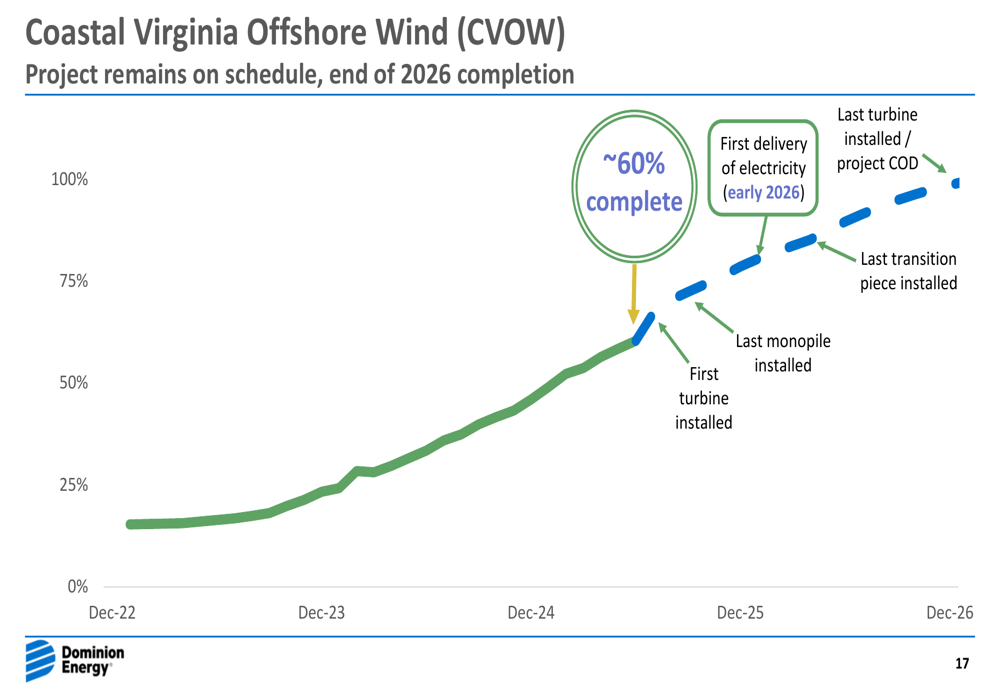Gold soars to record high over $3,900/oz amid yen slump, US rate cut bets
Introduction & Market Context
Dominion Energy Inc (NYSE:D) presented its second quarter 2025 earnings on August 1, showing steady financial performance and significant progress on its major offshore wind project. The company’s stock traded up 0.65% in premarket trading at $58.83, building on the previous day’s close of $58.45.
The utility giant reported earnings per share of $0.75 for Q2 2025, which included $0.02 from renewable natural gas (RNG) income and $0.01 from favorable weather impacts. This performance comes after a strong first quarter when the company exceeded Wall Street expectations with EPS of $0.93.
Quarterly Performance Highlights
Dominion Energy maintained its 2025 earnings guidance of $3.28-$3.52 per share (with a midpoint of $3.40), including approximately 10 cents per share from RNG income. The company also reaffirmed its long-term operating EPS growth rate of 5-7% based on 2025 operating EPS excluding RNG income ($3.30).
The company’s financial results presentation highlighted strong regulated electric sales growth, with weather-normalized year-over-year growth of 2.5% for the last twelve months ending Q2 2025. This growth was primarily driven by the commercial segment, which saw a robust 5.6% increase.
As shown in the following chart of regulated electric sales growth:

Dominion’s capital raising activities remain on track with guidance. For fixed income, Dominion Energy Virginia has issued $1.3 billion year-to-date against guidance of $2.0-$2.5 billion, while Dominion Energy South Carolina has fully met its $0.5 billion guidance. On the equity side, the company has completed its planned $1.0 billion at-the-market (ATM) equity issuance for 2025 and has already issued $0.6 billion for 2026.
The company’s capital raising progress is detailed in this slide:

Strategic Initiatives
The Coastal Virginia Offshore Wind (CVOW) project continues to be Dominion’s flagship strategic initiative. The project is now approximately 60% complete and is expected to deliver electricity in early 2026, with full completion scheduled for the end of 2026. When finished, CVOW will deliver nearly 3GW of power to Virginia’s grid.
The project has created approximately 2,000 direct and indirect American jobs and generated about $2 billion in American economic activity. It has received bipartisan political support and strong local backing, according to the company’s presentation.
The following slide illustrates the current progress of the CVOW project:

The current capital budget for the CVOW project stands at $10.9 billion, which includes $193 million of estimated tariffs. As of June 30, 2025, Dominion has invested approximately $7.5 billion in the project, with remaining costs of about $3.4 billion. Stonepeak, Dominion’s partner, will fund 50% of the project, leaving Dominion to fund the remaining $1.7 billion.
Tariffs remain a significant factor affecting the project’s economics. Current tariff rates include 25% for Mexico and Canada, 50% for steel (material value only), and 10% for the European Union. The projected impact through December 31, 2026, is $640 million, of which Dominion Energy will bear $186 million.
The detailed tariff impact analysis is presented in this slide:

The Charybdis installation vessel, crucial for turbine installation, is in final commissioning and remains on schedule. Testing completed includes leg jack-up testing, crane load testing, and thruster testing. The vessel is expected to arrive in Virginia after sea trials and support CVOW turbine installation in September as planned, with no change to the total project cost of $715 million.
Other Business Updates
Dominion Energy highlighted several regulatory achievements in its presentation. These include approval of a Certificate of Public Convenience and Necessity (CPCN) for LNG production/storage at Brunswick (NYSE:BC) and Greensville, approval of the Renewable Portfolio Standard (RPS) development plan, and approval of nuclear subsequent license renewal.
The company also noted that the Nuclear Regulatory Commission approved V.C. Summer subsequent license renewal for an additional 20 years through 2062, and the South Carolina Energy Security Act was passed and signed into law in May 2025.
Dominion’s customer base continues to grow steadily, with a total of 4.1 million customers across its service territories. Dominion Energy Virginia accounts for 2.8 million customers (68%), while Dominion Energy South Carolina serves 1.3 million customers (32%). Customer growth rates are 1.1% for Virginia and 2.4% for South Carolina.
Forward-Looking Statements
Looking ahead to the second half of 2025, Dominion identified several drivers that will impact its performance. For Q3, positive factors include regulated investment, contracted energy margins, electric rate cases, and sales growth. These will be partially offset by negative factors such as depreciation, depletion, and amortization (DD&A), financing costs, share dilution, and reduced electric capacity.
For Q4, similar factors are expected to influence results, with the addition of Millstone’s absence of planned outage as a positive driver.
The company’s CVOW project timeline shows continued progress toward completion, with first delivery of electricity expected in early 2026 and project commercial operation date (COD) following the installation of the last turbine later that year:

Conclusion
Dominion Energy’s Q2 2025 presentation portrays a company maintaining steady financial performance while making significant progress on its strategic initiatives, particularly the Coastal Virginia Offshore Wind project. The reaffirmation of 2025 guidance suggests confidence in the company’s ability to meet its financial targets despite various challenges, including tariff impacts on the CVOW project.
The strong growth in commercial sales (5.6%) is particularly noteworthy and aligns with comments made during the Q1 earnings call about robust demand from data centers in Dominion’s service territory. This growth driver, combined with the company’s regulated business model and long-term investments in renewable energy, positions Dominion to potentially deliver on its projected 5-7% long-term EPS growth.
As the CVOW project moves toward completion, investors will likely focus on execution risks, potential cost overruns, and the project’s ultimate contribution to Dominion’s earnings power once fully operational in late 2026.
Full presentation:
This article was generated with the support of AI and reviewed by an editor. For more information see our T&C.
